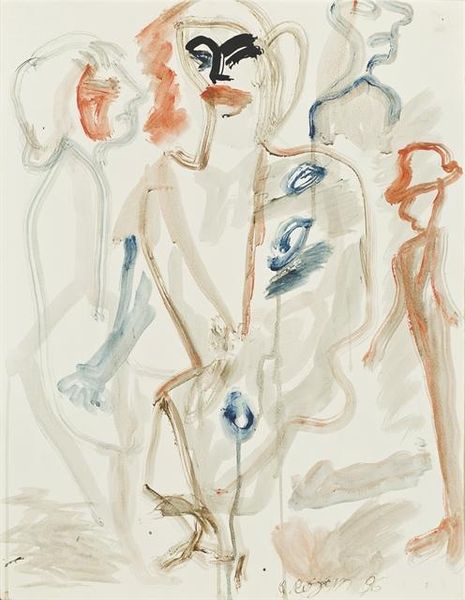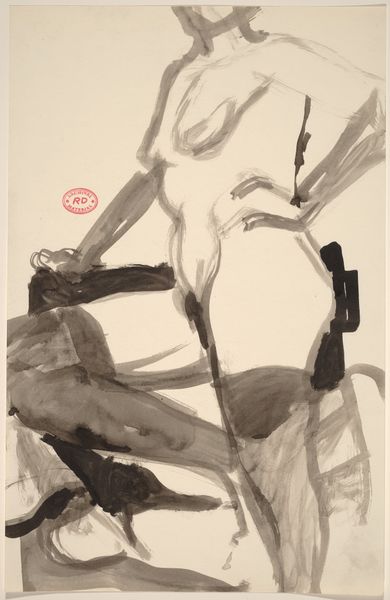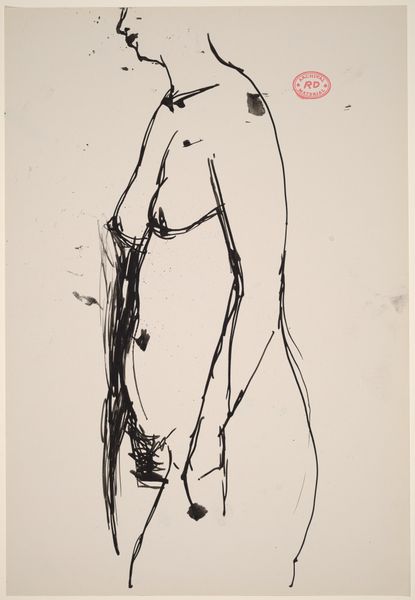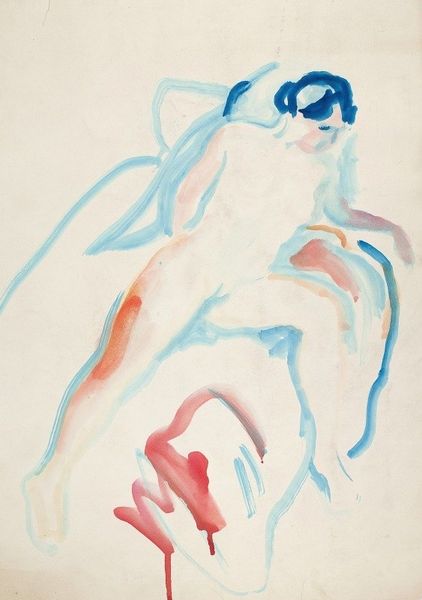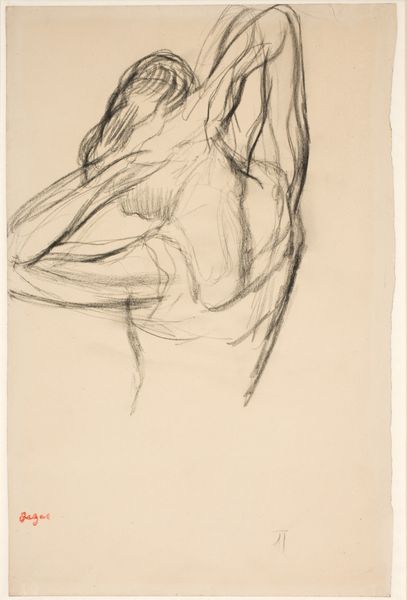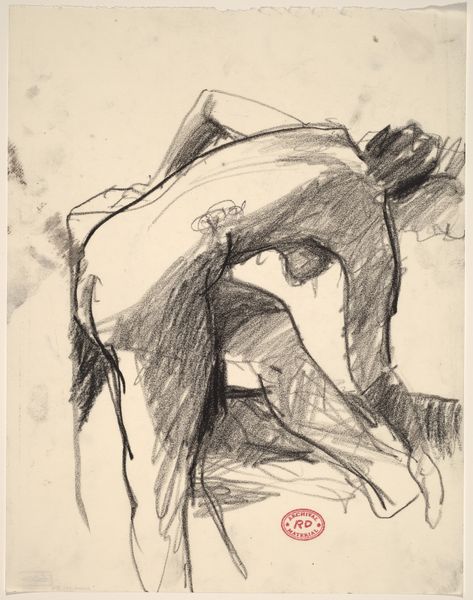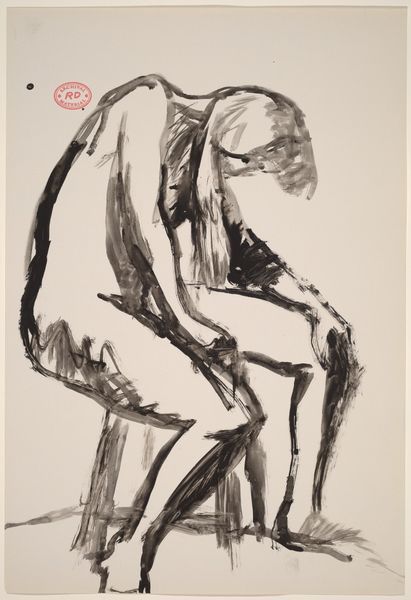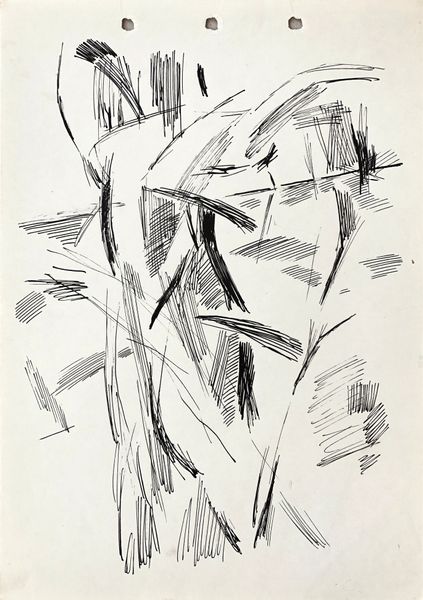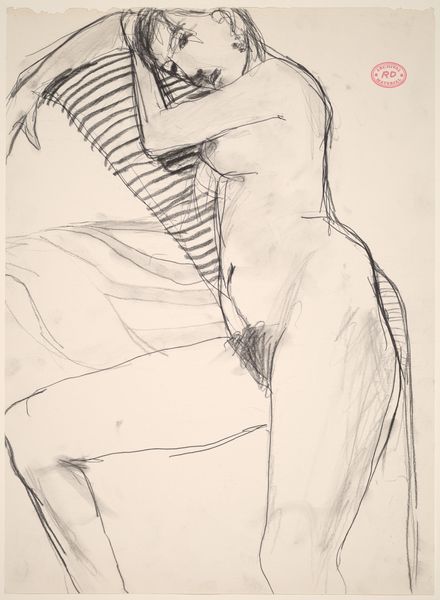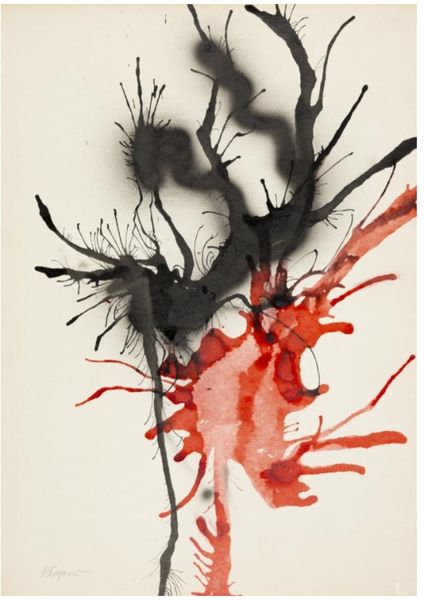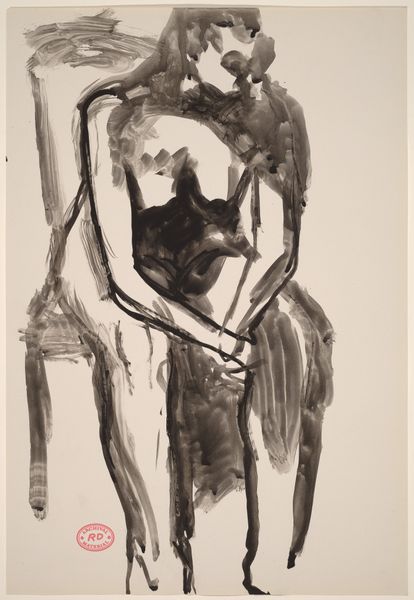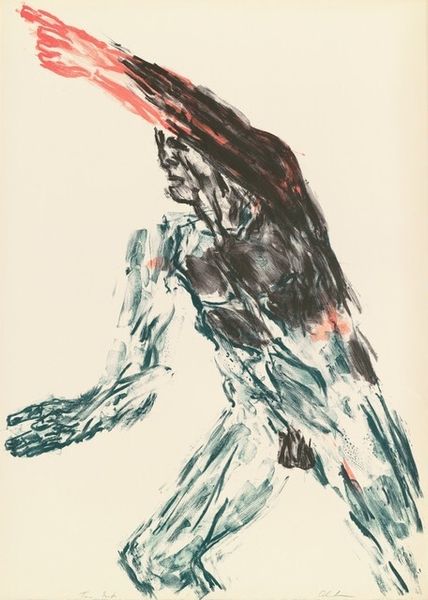
#
contemporary
# print
#
form
#
abstraction
#
line
#
watercolor
Dimensions: image: 42.5 x 38.2 cm (16 3/4 x 15 1/16 in.) sheet: 57.5 x 48.2 cm (22 5/8 x 19 in.)
Copyright: National Gallery of Art: CC0 1.0
Curator: What strikes me immediately is how ethereal the piece feels. It's ghostly, almost dreamlike in its construction. Editor: You're reacting to "The Presence of Brilliance," a 1988 print by Jaroslav Serych. Examining it within its historical context, specifically 1980s Czechoslovakia, this dreamlike quality perhaps speaks to the desire for an escape from political repression. Curator: That's a fascinating reading. I'm drawn to how Serych uses line and color, the washes of pale pink and the sharp strokes of black seem to hint at human figures but refuse to fully commit. Is this resistance to clear representation also politically motivated? Editor: Absolutely. During this period, artists often used abstraction as a form of veiled protest, a way to subvert the dominant socialist realism without being explicitly censored. Consider how these fragmented figures challenge the idealised and propagandistic images promoted by the state. Curator: The limited color palette is quite effective, creating a stark contrast between the delicate pink hues and the strong black lines, evoking perhaps the conflicting forces at play in Czech society at the time. This print’s delicate tension speaks to both hope and restraint. Editor: Precisely. The choice of printmaking as a medium also has its implications. Prints are easily reproduced and distributed, making art more accessible. This accessibility becomes a political act, a means of disseminating alternative perspectives and fostering a sense of collective identity outside of official channels. It reminds us to consider not only what the artwork depicts, but also how its materiality and means of production were implicated within systems of power. Curator: Viewing it through this lens definitely reshapes my understanding. It transcends pure abstraction and evolves into a commentary of a complex and deeply felt reality. It speaks to the strength of resistance in fragile forms. Editor: Indeed. Considering the artwork’s socio-political setting offers new interpretations, and we recognize the multiple layers of significance behind apparent visual choices. Curator: Thank you, that's a great help, I shall remember that in the future when describing such works. Editor: It's my pleasure. It shows, once more, that the convergence of aesthetics and historical circumstances provides for deeper analysis and the development of thought-provoking questions.
Comments
No comments
Be the first to comment and join the conversation on the ultimate creative platform.
